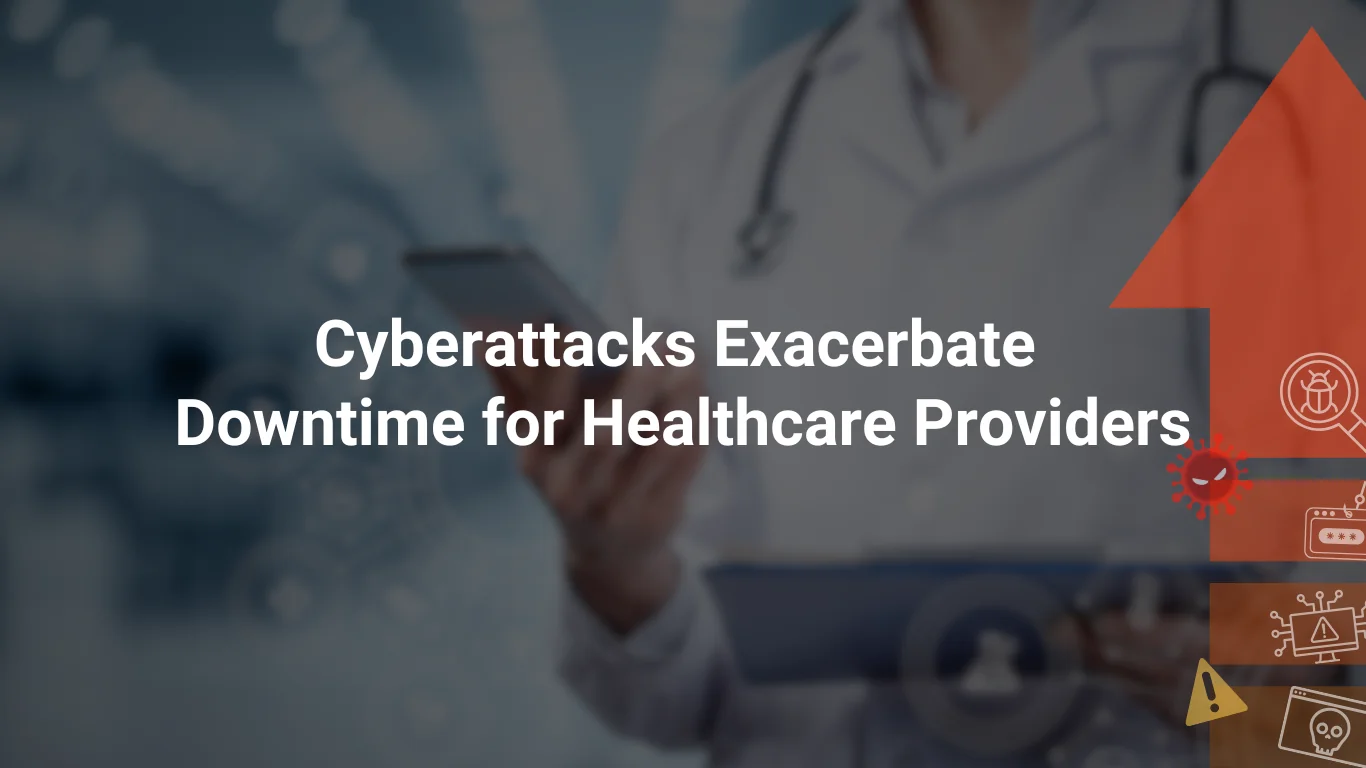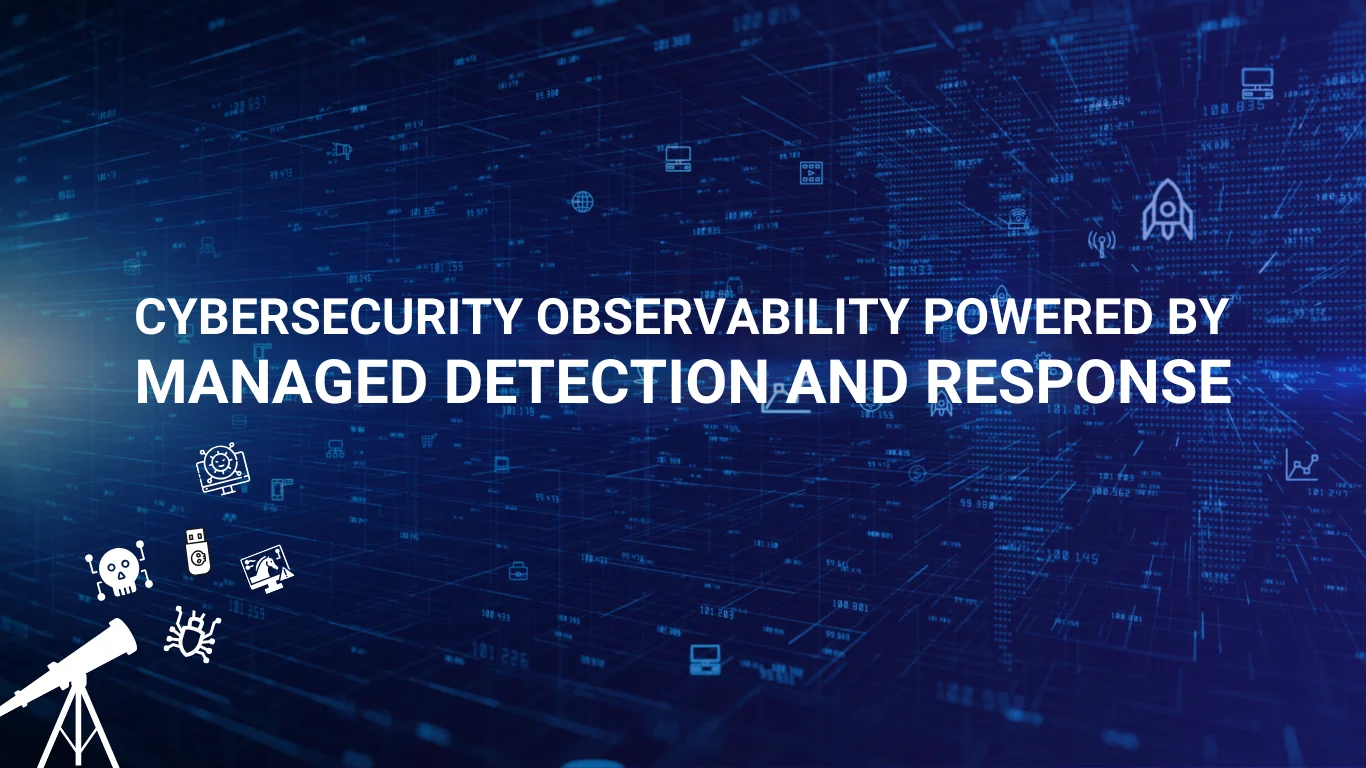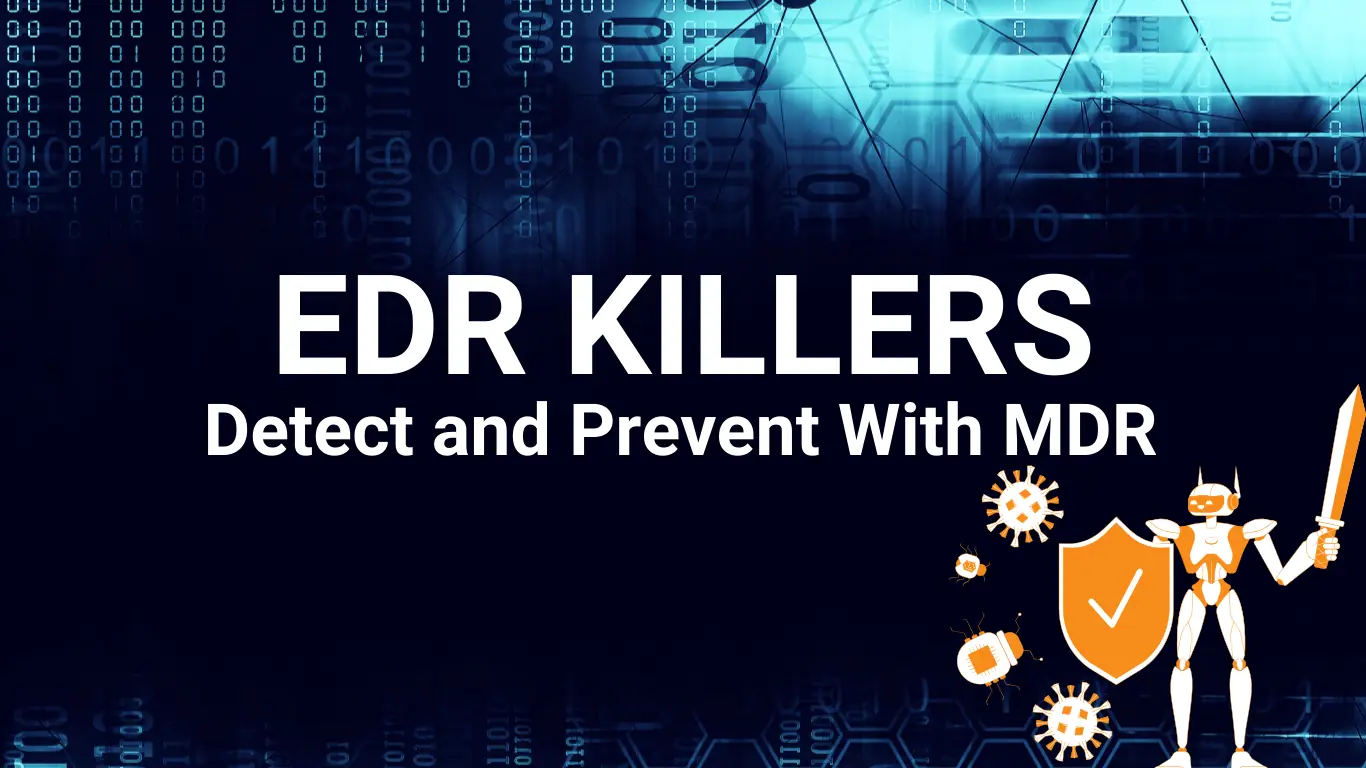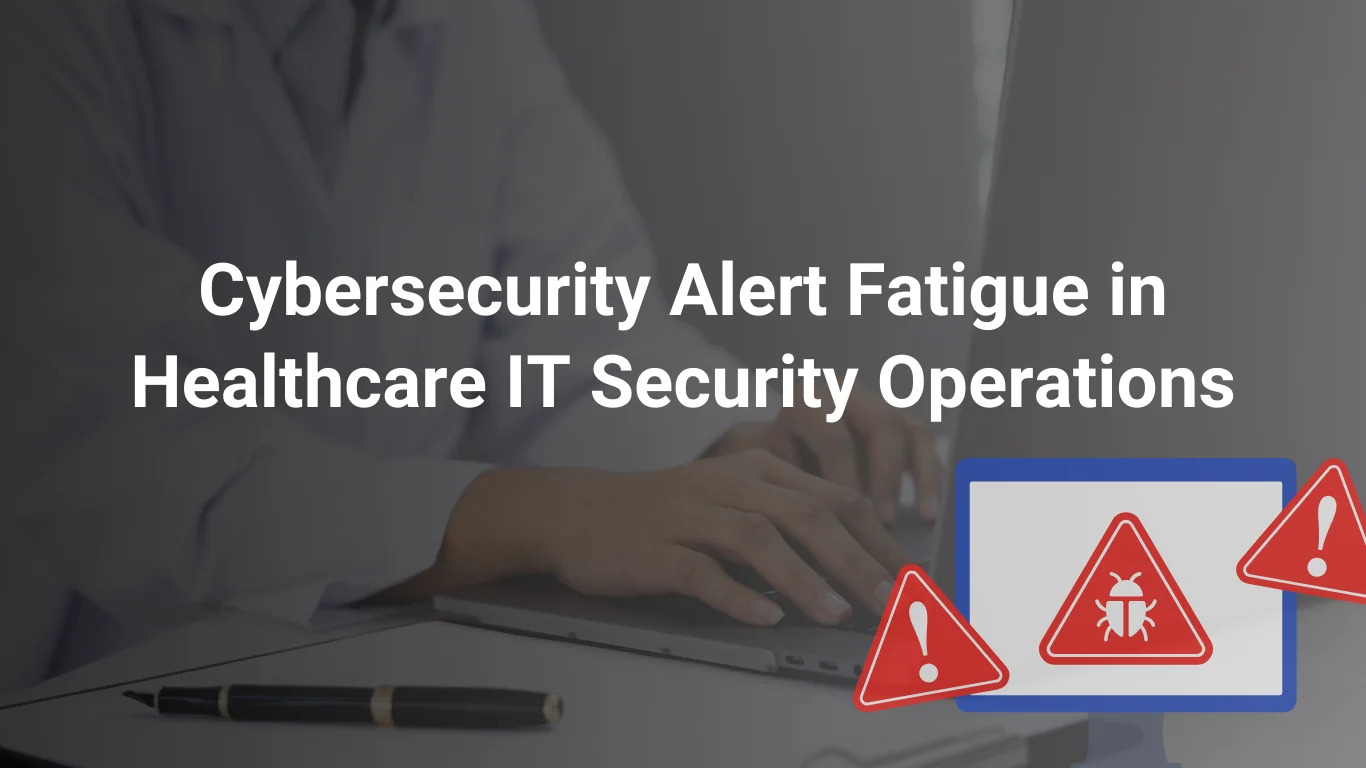More Downtime For Healthcare Providers Thanks to Cyberattacks
Hospital systems now heavily rely on computers, the internet, and electronic medical records (EMRs), creating vulnerabilities. As medical devices become more IP-enabled, especially in trauma centers, operating rooms, and pharmacies, hospital systems will face more cyberattacks, resulting in extended downtime.

Access to qualified talent to help manage the various adaptive controls remains an ongoing problem for healthcare providers.
Hence, the reason the team at ForeNova launched their NovaMDR service!
Interested in learning more about this incredible managed security service?
Click here to schedule a demo with the ForeNova healthcare security team today.
Reasons for a Downtime in Medical Healthcare

Downtime within an automotive company, financial services firm, or higher education institute happens and causes significant pain. However, downtime during a medical procedure, such as open-heart surgery, blood transfusions, or even emergency room triage, can be far more emotionally, financially, and legally impactful.
Predicting what part of the medical environment will become a hacker’s next target is challenging. Many healthcare providers rely on third-party application providers to deliver EMR, ambulance services, and resource scheduling. An attack on these platforms will cause downtime and massive financial losses.
Failing to deploy proper cybersecurity controls exposes healthcare providers within the European Union (EU) and member states like Germany to considerable legal and regulatory consequences for medical service downtime, data compromise, or loss of life.
Hackers using various attack vectors continue to cause extended downtime within the healthcare industry.
These attack vectors include:
- Ransomware attacks
- Distributed denial of service attacks (DDOS) against medical platforms, IP-enabled devices, and physical security devices, including cameras, badge readers, and environmental systems
- Credential hijacking
- Data exfiltration of medical records
- Email phishing attacks
- Business email compromise leading to financial fraud
Healthcare providers facing these and other attack vectors face considerable challenges preventing these from affecting additional core medical services and hospital business operations.
The People Factor
Healthcare employees face considerable stress during a downtown. Many hospital outages force these employees and leadership to go back to manual processes, paper records, and using analog communications to message all the various departments providing services. Employees continuous face this incredible amount of stress often will choose to the medical practice or the industry.
Adding to the complex problem, hospitals and medical providers that face considerable financial losses and lawsuits will be fallback to delaying elective surgeries and layoff staff to help cut costs.
Recovering from a downtime outage takes human capital resources. These resources become even more valuable for the hospital leadership.
How hospital executives response to the downtime along, including show emotional, professional, and financial support for their staff helps create a positive working culture.
Attacks on Third-party Healthcare Provider Platforms
Disruption in care delivery occurs when hospitals become directly attacked and ransomware targets essential third-party providers. The compromise of these critical services can significantly impact patient care.
Hospitals can suffer collateral damage from third-party attacks as cybercriminals use a “hub and spoke” strategy. By breaching a third party’s technology, they gain access to connected healthcare organizations, enabling them to spread malware or ransomware and extract data from multiple entities.
Financial Implications of a Healthcare Downtime
Hospitals are complex systems that require constant monitoring and management to ensure they run smoothly, so they need a high level of uptime to provide optimal patient care.
Unplanned downtimes in today’s digital healthcare setting are a painful reality that can severely impact patient safety, reputation, customer service, and trust.
“Other factors, such as natural disasters, power outages, unstable network connectivity, human error, also can cause these downtimes.”
Whatever the cause, the result is a costly and stressful interruption of dire services.
The average cost of downtime for hospitals is $7,900 per minute. These outages place these critical entities at risk of exposing sensitive data and patient records, leading to loss of revenue and hefty fines for HIPAA noncompliance.
Delays in Care
“Unexpected downtime delayed medical lab test results by about 62%,” according to a study by the National Institute of Health (NIH). Such delays can endanger patients or result in loss of life, highlighting the importance of communication and backup records during outages.
Patient Privacy
Given the increasing prevalence of cybersecurity threats, healthcare facilities must implement robust measures to safeguard against attacks that could jeopardize sensitive patient information.
Regulatory/Compliance Issues
Compromised patient data leads to HIPAA violations and service-level breaches. Downtime that risks patients’ record confidentiality breaches HIPAA regulations, with fines of up to $50,000 per violation.
Reputation and Referrals
EHR downtime delays patient care, leading to wait times longer and decreased patient satisfaction. It can also lower hospital HCAHPS scores and harm their reputation, reducing traffic. Recovering trust post-outage often requires significant marketing efforts and investment.
Staff Productivity
“Hospital and medical office system failures impact employee morale and productivity, costing about $138,200 on average because of lost end-user productivity.”
Cyberattack Effect on Patient Care
Hospitals facing ransomware attacks may experience disruptions in access to electronic health records (EHR) and patient data that last hours, days, or weeks.
Ransomware blocks access to medical records, medical devices, and environmental systems. Hackers extort, steal, and alter medical data at will unless the medical providers pay. Many do not. Some will leverage cyber insurance to help offset the financial losses.
Ensuring Access to Critical Care
Preventing a cyberattack against a healthcare provider’s most critical assets starts with assessing the riskiest systems. Protecting these systems, including environmental controls, operating room equipment, medical dispensary devices, and EHR platforms, must remain the health providers’ highest priority.
Healthcare providers must ensure access to critical care services and platforms have enough built-into resiliency to withstand a cyberattack, power failure, or human error.
More healthcare providers do not have the financial capital to protect 100% of all critical medical systems. Hackers, knowing this, continue to probe these providers, looking for the most vulnerable targets. These targets could be a nurse’s workstation, a doctor’s mobile device, or even an IP-enabled surveillance camera.
Without proper funding, healthcare IT executives continue to triage their enterprise networks, applications, and devices to determine which elements will cause the most impactful downtime.
Healthcare IT executives will perform a business impact analysis (BIA) to determine which systems experiencing downtime will cause financial damage and review the annual cybersecurity costs to protect these assets.
Maintaining Data Integrity
Like financial services, defense, and education, a hacker’s ability to leverage ransomware attacks creates several vulnerable situations. Hackers will extort money from healthcare providers by using malware to encrypt healthcare records, including making good on the threat of manipulating medical data. Healthcare providers have countered this risk with investments in business continuity plans (BCP), disaster recovery capabilities (DR), and backup and restore functionality.
So, hackers then turned their attention to targeting BCP, DR, and backup systems. Regardless of who designed and developed it, even a system has vulnerabilities, including backup systems.
Healthcare providers continue to look for ways to stay ahead of the threat landscape by investing in artificial intelligence (AI), machine learning (ML), and other cybersecurity defensive tools to help protect their data.
Case Study: German Healthcare Provider Attack
This disruption showed that vulnerabilities within healthcare systems leveraging third-party digital connections remain at risk.
“A mis-configured update to CrowdStrike Falcon software triggered a massive IT outage, causing millions of computers to show the “blue screen of death.”
“In Germany, the University Clinic of Schleswig-Holstein canceled elective surgeries, while in Israel, over a dozen hospitals operated manually, rerouting ambulances.”
AI and ML Cybersecurity Defensive Tools: Essential to Healthcare Security
Hospital systems in Germany and other EU member states continue to innovate and modernize their healthcare platforms. This strategy includes moving to EMRs and AI-enabled cybersecurity defensive tools for email security, network detection and response (NDR), and access control.
These AI-powered tools allow healthcare providers to counter similar adversarial AI tools used by hackers. Without these AI-enabled tools, healthcare providers will continue to face lengthy and extensive downtimes, fines, and patient losses.
The Role of a Managed Detection and Response (MDR) Service for Healthcare
Medical providers must invest talent to manage these AI-enabled tools to prevent healthcare downtime. Poorly configured tools or unmanaged security capabilities will lead to cyberattacks.
MDR providers like ForeNova help configure, manage, monitor, and future-proof healthcare provider’s cybersecurity infrastructure. Leveraging the NovaMDR platform, ForeNova brings exceptional EU and global resources to help protect healthcare providers, including several in Germany.
Without a strategy partner like ForeNova, most healthcare providers will face more extended outages, financial losses, and credibility.
Why ForeNova?
ForeNova, with its experience in EU-based healthcare cybersecurity and cost-effective solutions for medical providers, should be your preferred partner for 24/7/365 securing, monitoring, and responding to cyberattacks.
Click here to schedule a demo of their fantastic NovaMDR platform today!






